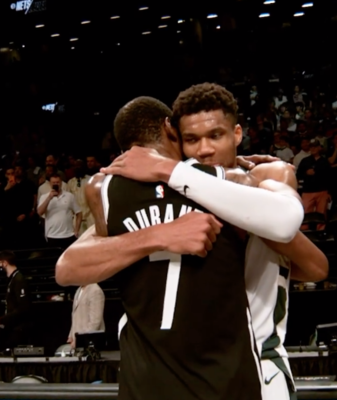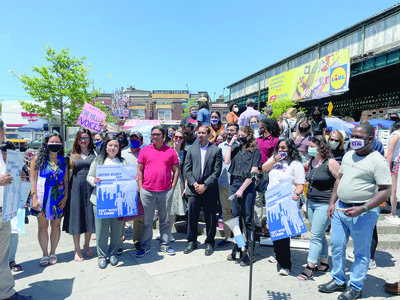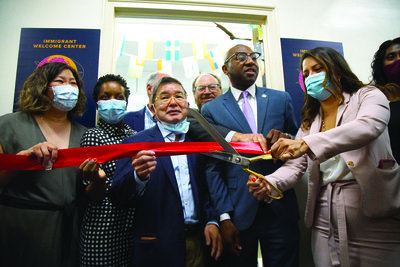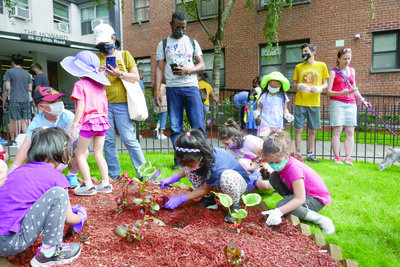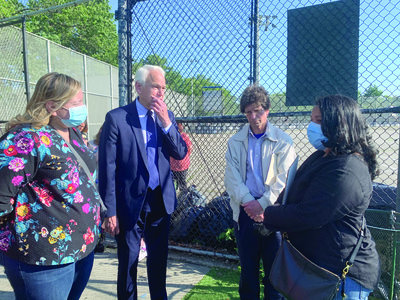The Nets season came to an end on Saturday, cut short by the Milwaukee Bucks in an epic Game 7. After being pegged as a contender, Brooklyn’s playoff run lasted just two rounds, a disappointing conclusion to a record-setting year.
The Nets played with all three of their superstar trio for just eight games in the regular season, but in the second round of the playoffs, the Big Three lasted just 40 seconds before James Harden reaggravated his hamstring injury. Without him, the Nets were still able to brush aside the Bucks, taking Game 1 before blowing them out in Game 2.
The series quickly swung to the Bucks’ favor as it moved to Milwaukee. A gritty Game 3 let the Bucks back in the series with a 86-83 win. Brooklyn’s 83 points were not only their lowest score all season, but the fewest points recorded by either team in any Nets game this year.
The attention turned to Game 4, with the Nets still firmly in control. Still Brooklyn was lackluster on offense, and it only got worse as Kyrie Irving became the second Nets star to exit with an injury.
After putting up an uncontested layup, Kyrie landed on Giannis Antetokounmpo’s foot, spraining his ankle. The Nets guard stayed on the ground in clear pain and was quickly taken out. Without either of their star-studded backcourt pair, Brooklyn was unable to match the Bucks, who leveled the series at 2 with a 107-96 win.
Suddenly, Brooklyn’s backs were up against the wall. In what seemed to be another easy round, they had lost two starting guards and returned home in a tight spot. While the Nets were able to coast to the 2nd seed despite injuries and setbacks, that was not an option in the postseason. Despite Harden’s grade-2 hamstring injury lingering, he was announced as available with just hours before tip-off, eventually taking the floor for his 2nd start of the series.
The bulk of the workload fell on the shoulders of Kevin Durant, who seems to have never missed time after his Achilles injury. After averaging just under 30 points over the first four games, Durant exploded in Game 5 for an all-time playoff performance.
KD played all 48 minutes of the game, scoring 49 points and picking up a triple-double with 17 rebounds and 10 assists. Despite the dynamic Milwaukee defense, Durant knocked down 70% of his shots. KD scored 20 of his points in the final quarter, with a pair of deep three-pointers putting Brooklyn up for good with minutes to go.
After Brooklyn took Game 5 115-108, they again came out flat on the road. For the third time in the series, the Nets were held to under 100 points, falling 104-8. Role players like Joe Harris and Jeff Green got cold after strong performances earlier in the series combining for just 14 points, with nobody on the bench scoring more than five.
The Nets neglected the bench in the final game of the series, only using Green for 13 minutes, Landry Shamet for seven, and Nic Claxton for a single inbound play at the end of regulation. None of them recorded a single point. Again the workload fell on the Nets stars, with Harden this time playing almost every minute despite his injury.
It may not have been wise to overplay Harden, especially given how limited his offensive game was. Without his leg at 100% Harden lost his ability to consistently hit deep shots and beat perimeter defense to drive to the rim. Though his role was to take pressure off of Durant, Harden’s shooting was not enough to add significant points to the scoreboard. Harden shot just 5-26 from three and under 24% from the floor through the series.
Again it was Durant who stepped up for a legendary game, almost single-handedly willing the Nets into the Eastern Conference Finals. KD was automatic, especially as the game came down to the wire. Brooklyn was unable to find separation through the game as the Bucks hung around. Tenacious defense forced the Nets into difficult shots, but Durant still made his attempts look effortless.
The Bucks jumped ahead with just minutes to go, quieting the crowd in Brooklyn. They held a 2-point lead with just six seconds left when the ball was inbounded to Durant in the backcourt. The 7-footer was immediately met by PJ Tucker, but used his frame to create separation before spinning around for a deep shot.
KD hit nothing but net as the shot clock expired, but it was ruled a 2-point field goal as his foot barely touched the three-point line. Still, the miraculous shot leveled the game at 109 with 1 second remaining. Antetokounmpo’s contested game-winner came nowhere close and the game went to overtime.
The extra period did not fare well for the Nets, as they scored just two points. Bruce Brown hit a floater for a 111-109 Brooklyn lead, but the Bucks finally answered a few minutes later to tie it again. With under a minute left, a long rebound fell right to Joe Harris for a wide open three with a chance to go ahead for good. The crowd braced for the shot, hoping he’d end his cold spell. Instead Harris’ three clanged off the rim, and Milwaukee took the lead on the other end.
On the last play of the game, Durant found himself again with the ball at the top of the key. His second turnaround shot came up short and the final seconds expired, unable to recreate his magic from the 4th quarter. Milwaukee went on to win 115-111, advancing to the Conference Finals.
Durant finished with 48 points, setting a NBA record for points in a Game 7. Antetokounmpo finished with a series-high 40 points, powering the Bucks forward. Both played over 50 minutes in the epic series finale.
For Brooklyn, a remarkable season is boiling down to a list of what-ifs. What if Kyrie stays healthy? What if Harden returns at full strength? What if Joe Harris hit his three-point shot? What if Durant wore one shoe size smaller? The questions can go on forever, but the fact remains that this is just the beginning for Brooklyn.
The Nets are far from the only top team to bow out early. The defending champion Lakers fell in the 1st round, the #1 overall seeded Jazz lost in the 2nd round, and the East’s top-seeded 76ers were upset by the Hawks on Sunday.
The Nets were also not the only team to deal with tough injuries. This year a record number of all-stars missed playoff games, with stars like LeBron James, Anthony Davis, Jaylen Brown, Kawhi Leonard, and Donovan Mitchell all sidelined for at least one game. The injuries may be a symptom of the short offseason and crammed schedule, which will be something to watch as the league prepares for the 2021-22 season.
The playoffs had a handful of fun narratives, with many hoping to see the Nets matchup against Los Angeles, face off against Philly, or even take on their crosstown rival Knicks. Instead, these contests will have to wait, hopefully to come next postseason.
The Nets aren’t done after the disappointing series. They still have their core together and are ready to improve. Before this year’s postseason wraps up, the Nets will already be favored for next year’s championship. For now, it’s all about making the adjustments necessary to bring home the first title in franchise history.


